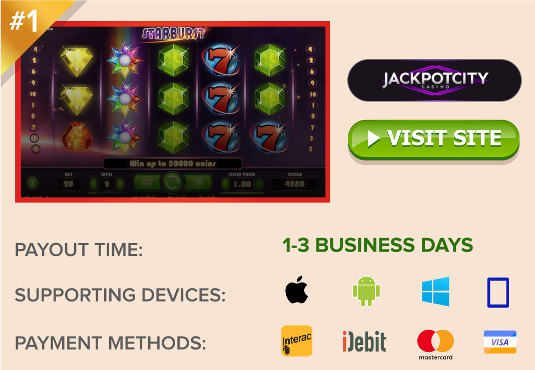American Blackjack Rules & Tactics
How to play American Blackjack with pro player tips for a more prosperous outcome.

The name American Blackjack is derived not from a specific type of game, but rather a typical set of rules within a collection of games. In fact, we call them American rules because those specific rules directly oppose those found more commonly in European style games – and because these rules are found more often in North American casinos.
As is the case with US casinos in particular, these rule variations tend to favor the house more so than the players. This shouldn’t come as much surprise since, according to all accounts of blackjack history, it was US casinos that came up with the idea that a “natural blackjack” should be an “Ace of Spades + Black Jack”, rather than “any Ace + 10 or Face Card” (i.e. any two-card total of 21).
By this assessment, you might assume that any American Blackjack game is going to have unfriendly rules to it. Fortunately, that’s not usually the case. The American Blackjack games from software companies like Playtech, Dragonfish and Random Logic carry a house edge of no more than 0.48%, which is on par with the average for top-paying online blackjack games.
Typical Americanized Blackjack Rules
As I said above, American 21 has a few static rules you can expect to find on any game carrying this name. They include:
Doubling Down on Any 2 Cards: Players can expect to have the option of doubling on any two card total, as opposed to doubling on 9, 10 or 11 only during European games.
No Surrender: Do not expect to find any Surrender rules in an Americanized game. Early and/or Late Surrender will not be an option.
Dealer Peeks: The dealer will almost always peek for blackjack because, by American rules, a player cannot lose more than their original bet when the dealer has blackjack. If you happen to find an American rules blackjack game in which the dealer does not peek with an Ace showing, you should expect to get any overage bets returned if a dealer blackjack results.
In the following sections, we’ll get into all of the specific rules in a typical game, as well as a basic strategy for maximizing your win rate.
How to Play American Blackjack
This game can be found in a multitude of North American land-based casinos, and is the chosen namesake of several digital gambling software companies. Bear in mind that each one might throw in a variable rules or two, and those alterations will have a slight effect on the house edge of the game.
The following rules are applied to the American Blackjack games published by online software brand Dragonfish.
The object of the game – as always – is to beat the dealer’s hand by achieving a total hand value closer to 21, without busting (going over).
The complete list of player and dealer hand rules include:
- Decks: 6
- Soft 17: Dealer Stands
- Doubling: Yes, on any two cards
- Splitting: Yes, 1x
- Double after Split: Yes
- Surrender: No
- Dealer Checks for Blackjack: Yes, on Ace or 10
- Tie for Blackjack: Push
- Blackjack Pays: 3 to 2
American 21 Strategy and Advice
Follow this strategy for American Blackjack precisely and you should achieve a long-term house edge of 0.48%. The following charts are split into three categories, including the proper reactions to employ against all possible Hard Total Hands and Soft Total Hands, plus Conditions for Splitting.
How to Decide Hard Total Hands
A hard total hand value is any cumulative value that does not involve an Ace, that can be calculated as 1 point (as opposed to 11 points). For example, 6+5+A is a hard total of 12, since the Ace cannot be an 11 without busting the hand.
The following chart details how to handle any and all situations with a hard hand total.
| Hand Value | Correct Action by Situation |
| 8 & Under | Hit |
| 17 & Up | Stand |
| 9 | Double if Dealer shows 3-6; otherwise Hit |
| 10 | Double if Dealer shows 2-9; otherwise Hit |
| 11 | Double if Dealer shows 2-9; otherwise Hit |
| 12 | Stand if dealer shows 4-6; otherwise Hit |
| 13 | Stand if Dealer shows 2-6; otherwise Hit |
| 14 | Stand if Dealer shows 2-6; otherwise Hit |
| 15 | Stand if Dealer shows 2-6; otherwise Hit |
| 16 | Stand if Dealer shows 2-6; otherwise Hit |
How to Decide Soft Total Hands
A soft total hand value is any cumulative value that involves and Ace counted as 11 (not 1). If you hit a soft total, it cannot bust. For example, A+4 is a soft 15.
| Hand Value | Correct Action by Situation |
| 13 or 14 | Double on dealer’s 5-6; otherwise Hit |
| 15 or 16 | Double on dealer’s 4-6; otherwise Hit |
| 17 | Double on dealer’s 3-6; otherwise Hit |
| 18 | Hit on dealer’s 9-A; Double on 3-6; otherwise Stand |
| 19 to 21 | Stand |
Conditions for Splitting Pairs
Certain pairs call for splitting, but not all of them. The following chart shows exactly when it is (and is not) strategically appropriate to split a pair in American Blackjack.
| Pair | Correct Action by Situation |
| Ace-Ace | Hit if dealer shows Ace; otherwise Split |
| 2-2 | Split if Dealer shows 2-7; otherwise Hit |
| 3-3 | Split if Dealer shows 2-7; otherwise Hit |
| 4-4 | Split if Dealer shows 5-6; otherwise Hit |
| 5-5 | Double if Dealer shows 2-9; otherwise Hit |
| 6-6 | Split if Dealer shows 2-6; otherwise Hit |
| 7-7 | Split if Dealer shows 2-7; otherwise Hit |
| 8-8 | Split if Dealer shows 2-8; otherwise Hit |
| 9-9 | Split if Dealer shows 2-6 or 8-9; otherwise Stand |
| 10-10 | Stand |
 Jackpotcity.com is our editorial pick for your gaming needs. Currently offering an entire suite of casino games, as well as a wide range of Canadian deposit options, JackPotCity truly offers world-class gaming.
Jackpotcity.com is our editorial pick for your gaming needs. Currently offering an entire suite of casino games, as well as a wide range of Canadian deposit options, JackPotCity truly offers world-class gaming.





